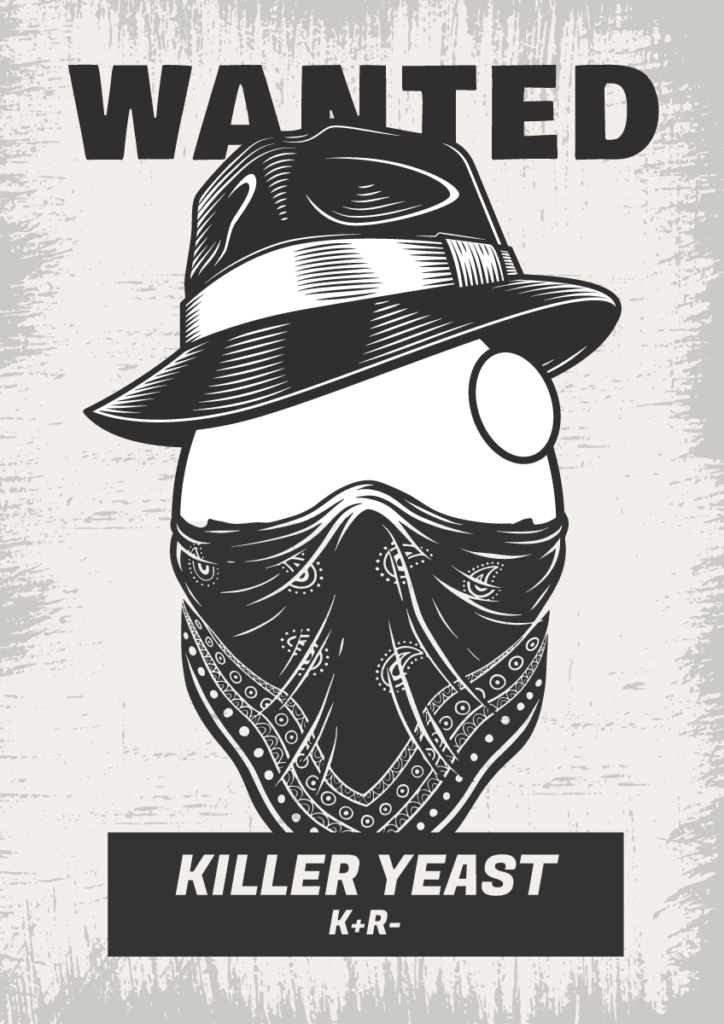What are ‘killer’ yeast strains and are they important?
By Etienne Dorignac, Technical Manager & Oenologist, Fermentis

In a lot of documentations about wine yeasts, you will probably find an information about their “Killer” status… scary indication isn’t it? Let’s talk a bit about the meaning of this status – which seems like it was taken straight from a thriller movie!
Certain yeast strains can effectively produce and excrete proteins that are toxic for other strains. These proteins will bind to a specific receptor located on the surface of the cell wall and slowly induce the death of the affected strain.
There are 3 common types of strains: “Killer” ones which secrete the toxin and don’t possess its receptor (K+R-), “Sensitive” which don’t secrete the toxin but can bind to it (K-R+) and “Neutral” which neither excrete nor bind (K-R-).
As several toxins exist, in the wine world we almost always talk about the “K2” toxin when referring to the killer factor as this protein expresses its activity at wine pH (2.8-4.8).
However, the ratio between Killer and Sensitive strains – in order to move the population towards the predominance of Killer strains in winemaking conditions – is highly variable, from 1/1000 to 25/1!
The efficiency of the toxin depends on several parameters including temperature (thermo-sensitive) and pH (inactive below 2.9) which are the most important and can also be affected by the presence of polyphenols or additives.
But above all, the strains themselves show very different killer activity or sensitivity degrees… Anyhow, even if it is highly variable, it is generally recognized that the possession of this killer factor gives a better chance of implantation of said strain into the must and that is why it is something we rather look for when selecting wine yeast….
And we haven’t even mentioned the “suicide” strains (K+R+) which secrete toxins that can affect themselves… but that’s another story !